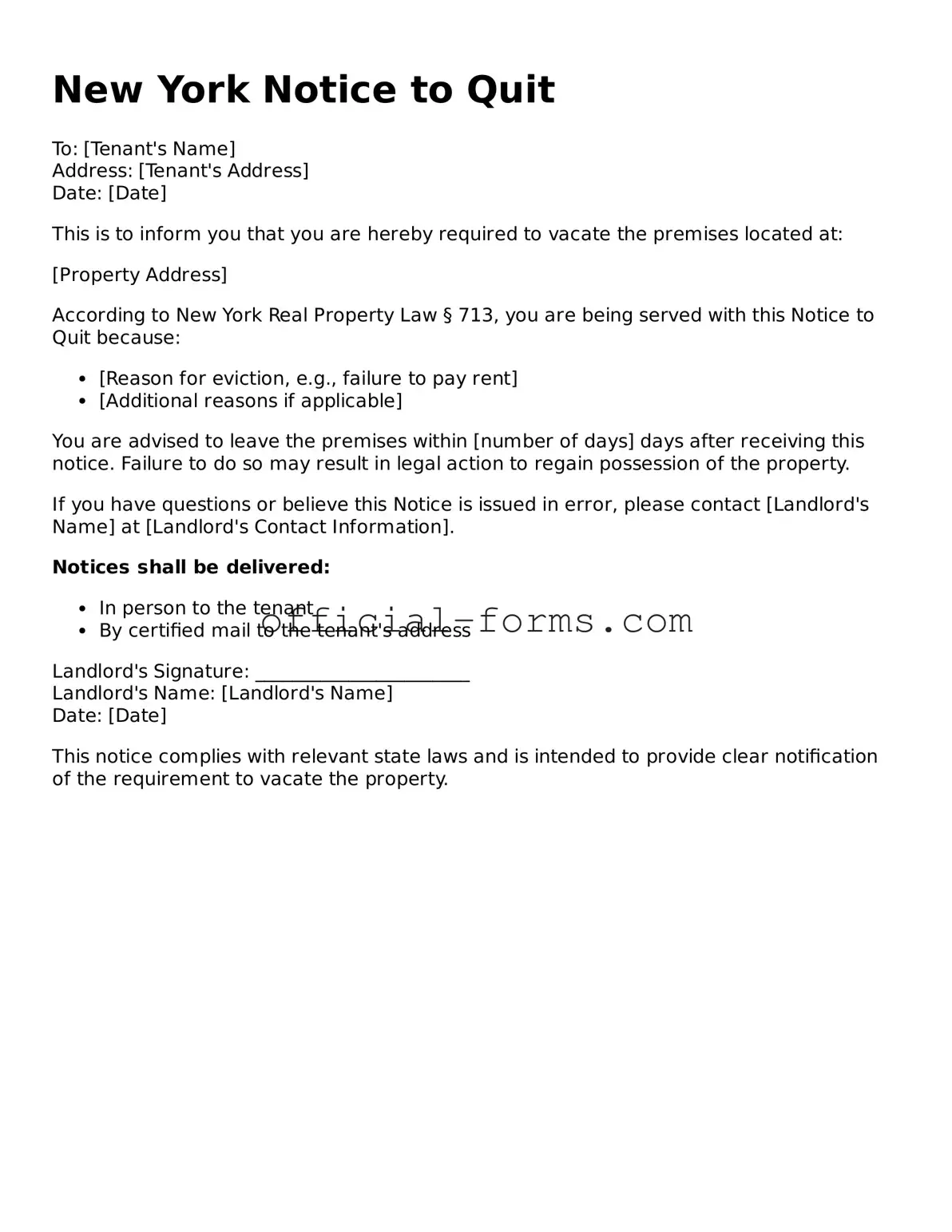Filling out the New York Notice to Quit form can be straightforward, but many people make common mistakes that can lead to delays or complications. One frequent error is failing to include the correct date. It’s essential to specify the date the notice is being served. Without this, the recipient may be confused about when they need to vacate the premises.
Another common mistake is not providing adequate details about the tenant. The form requires the full name of the tenant or tenants. Omitting names or misspelling them can cause legal issues later on. Always double-check the names to ensure accuracy.
People often overlook the importance of specifying the reason for the eviction. While it may seem unnecessary, stating the reason clearly can help avoid misunderstandings. A vague or unclear reason may lead to disputes, so be specific about the grounds for the notice.
Additionally, some individuals forget to sign the form. A signature is crucial as it validates the notice. Without a signature, the notice may be considered invalid, and the eviction process could be delayed.
Another mistake involves not keeping a copy of the completed form. It’s vital to retain a copy for your records. This documentation can be essential if disputes arise later. Always make sure to have a backup.
Lastly, many people fail to deliver the notice properly. The law requires that the notice be served in a specific way, whether in person or via certified mail. Not adhering to these requirements can render the notice ineffective. Ensure you follow the proper delivery methods to avoid complications.
